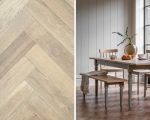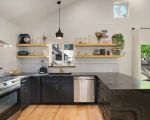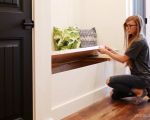- 1-Tools-and-Materials-Needed
- 2-Preparing-Your-Wood-and-Cutting-Accurately
- 3-Assembling-the-Frame-Step-by-Step
- 4-Finishing-Touches-and-Personalization
- 5-Real-Life-DIY-Picture-Frame-Success-Stories
1. Tools and Materials Needed
Before diving into how to build a DIY wooden picture frame, gather essential tools and materials to make the process smooth and enjoyable. You'll need:
- Wooden boards or molding (choose the type and finish based on your style)
- A miter saw or hand saw for precise angled cuts
- Wood glue and clamps
- Measuring tape and pencil
- Sandpaper for smoothing edges
- Hammer and small nails or brads, or a nail gun
- Optional: Wood stain or paint for finishing
- Glass or acrylic sheet to protect the picture
- Backing board and hanging hardware
Having these items ready ensures you can focus on crafting without interruptions.
1.1 Choosing the Right Wood
Select wood that complements your décor and is easy to work with. Pine is a great beginner-friendly option due to its softness and affordability, while hardwoods like oak or walnut offer durability and a classic look.
2. Preparing Your Wood and Cutting Accurately
Accurate measurement and cutting are the foundation of a professional-looking DIY wooden picture frame. Begin by measuring the dimensions of your picture or artwork.
2.1 Measuring for the Frame
Measure the height and width of your picture and add a small allowance for the frame’s lip (the part that holds the picture in place). Mark these dimensions carefully on your wooden boards.
2.2 Cutting 45-Degree Angles
To create clean corners, cut the boards at precise 45-degree angles. Using a miter saw will make this step easier and more accurate. If using a hand saw, take extra care to maintain consistent angles.
3. Assembling the Frame Step-by-Step
Once your pieces are cut, it’s time to assemble the frame:
3.1 Dry Fit the Pieces
Before gluing, place all four pieces together to ensure they fit perfectly. Adjust if necessary.
3.2 Gluing and Clamping
Apply wood glue along the edges and join the corners. Use clamps to hold the frame tightly while the glue dries, usually for a few hours or as per glue instructions.
3.3 Reinforcing the Frame
After the glue has set, reinforce the joints with small nails or brads for extra strength. This step is especially important if the frame will hold heavy glass or artwork.
4. Finishing Touches and Personalization
Sanding the frame smooth and applying a finish are key to giving your frame a polished, professional look.
4.1 Sanding
Use fine-grit sandpaper to smooth all edges and surfaces, removing any roughness or glue residue.
4.2 Staining or Painting
Choose a wood stain to enhance the natural grain or paint your frame to match your room’s color scheme. Allow sufficient drying time between coats.
4.3 Adding Hardware and Glass
Attach the glass or acrylic sheet carefully, then secure the backing board. Install hanging hardware suitable for the frame’s size and weight.
5. Real-Life DIY Picture Frame Success Stories
One memorable story comes from a beginner woodworker who built a rustic frame for a family photo using reclaimed barn wood. Despite initial doubts, their careful attention to measurement and finishing resulted in a cherished heirloom that sparked joy for years.
Another example features a young artist who handcrafted custom frames for their artwork, giving each piece a unique touch that galleries praised. Their DIY project became a signature style that set their work apart in exhibitions.
5.1 Lessons from These Experiences
Both stories demonstrate that patience, attention to detail, and choosing materials thoughtfully make a significant difference in the outcome. Building a DIY wooden picture frame is not only a rewarding project but also an opportunity to add personalized charm to your home.
For more detailed plans, tools, and materials to help you master woodworking projects like building your own picture frames, Improvement offers expert advice and curated products tailored to your DIY ambitions.








